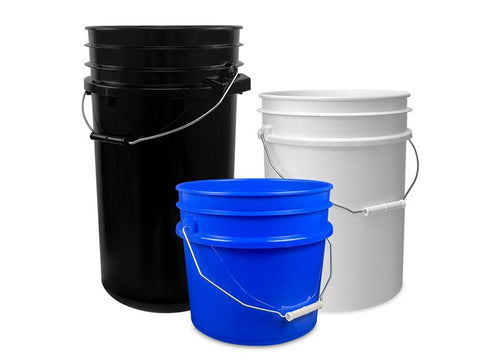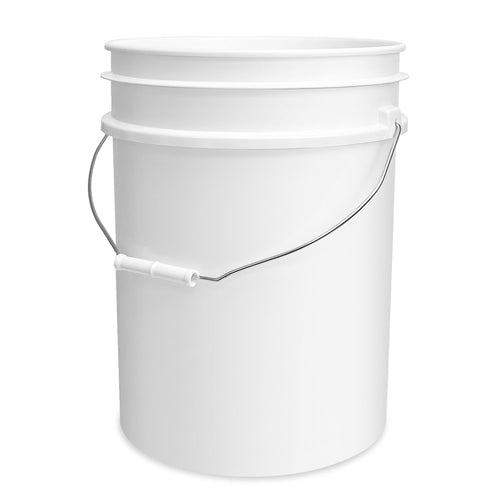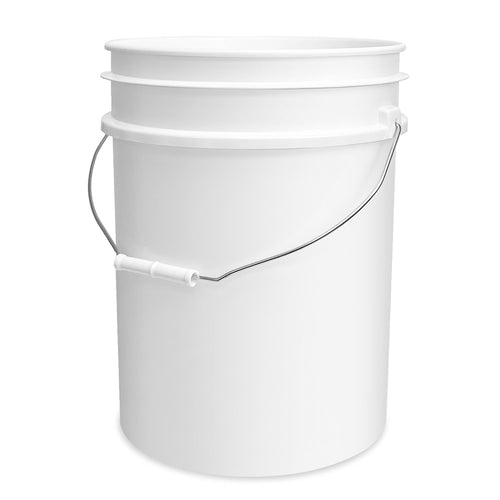Is Your Brand Facing Packaging Updates Due to Recent Food Chemical Bans?
The landscape of food and beverage manufacturing is undergoing a significant transformation. Recent announcements from the U.S. Food and Drug Administration (FDA) regarding the phase-out and banning of certain food additives are sending ripples throughout the industry. For food and beverage companies, this isn't just about reformulating recipes; it also necessitates a review of your packaging and labeling strategies.
At ePackageSupply, we understand that these regulatory shifts can present complex challenges. Our goal is to help you navigate these changes, ensuring your brand remains compliant, your products stay appealing, and your packaging continues to effectively communicate with your customers.
⏱️ Quick Summary: What You Need to Know
- What's Happening: FDA is banning Red Dye No. 3 and phasing out all petroleum-based food dyes
- Who's Affected: Any food manufacturer using synthetic dyes in their products
- Key Deadline: January 15, 2027 for foods with Red Dye No. 3
- Your Action: Audit products NOW, update packaging by mid-2026, communicate changes to consumers
- Why It Matters: Non-compliance could result in recalls, fines, and loss of retail partnerships
The Latest from the FDA: What You Need to Know
The FDA has been taking decisive action to address concerns surrounding petroleum-based synthetic dyes in the nation's food supply. This initiative, part of a broader push to "Make America Healthy Again," signifies a significant pivot for the industry.
🚨 Who Might Be Affected: (Hypothetical Examples)
- Candy manufacturers using Red Dye No. 3 for pink or red products
- Bakeries using synthetic dyes in frostings and decorations
- Beverage companies relying on artificial colors
- Snack food producers using dyes for product appeal
Key developments include:
- Red Dye No. 3 (FD&C Red No. 3) Ban: As of January 15, 2025, the FDA announced it is revoking the authorization for the use of FD&C Red No. 3 in food and ingested drugs. This decision is based on the Delaney Clause of the FD&C Act, which prohibits the authorization of any food or color additive found to induce cancer in humans or animals. Manufacturers using Red No. 3 in food and ingested drugs have deadlines of January 15, 2027, or January 18, 2028, respectively, to reformulate their products. While the FDA states the cancer findings were specific to male rats at high exposure and not observed in humans or other animals, the legal mandate of the Delaney Clause requires this action. Red No. 3 has been primarily found in items like candy, cakes, cookies, frozen desserts, and frostings.

FD&C Red No. 3 is a petroleum-derived color additive now scheduled for removal from the U.S. food supply under FDA rules.
-
Phasing Out All Petroleum-Based Synthetic Dyes: In a broader move announced on April 22, 2025, the HHS and FDA revealed a series of measures to systematically phase out all petroleum-based synthetic dyes from the food supply.
- This includes initiating the process to revoke authorization for Citrus Red No. 2 and Orange B in the coming months.
- The FDA is also working with the industry to eliminate six additional synthetic dyes (FD&C Green No. 3, FD&C Red No. 40, FD&C Yellow No. 5, FD&C Yellow No. 6, FD&C Blue No. 1, and FD&C Blue No. 2) from the food supply by the end of next year (2026).

Petroleum-based synthetic dyes—like the vivid powder shown—are being phased out in favor of safer, plant-derived alternatives.
- Accelerated Approval for Natural Alternatives: To support this transition, the FDA is fast-tracking the review and authorization of new natural color additives, with four already authorized and others like calcium phosphate, Galdieria extract blue, gardenia blue, and butterfly pea flower extract in the pipeline.
- Earlier Removal for Red No. 3: Food companies are being requested to remove FD&C Red No. 3 even sooner than the previously stated 2027-2028 deadlines.
Quick Reference: Synthetic Dyes vs. Natural Alternatives
| Banned Dye | Natural Alternative Options | Potential Color Differences | Key Considerations |
|---|---|---|---|
| Red No. 3 | Beet juice, carmine, anthocyanins | May be less vibrant, potential fading | Stability, cost increase likely |
| Yellow No. 5 | Turmeric, saffron extract | More orange-tinted hue possible | Flavor impact considerations |
| Blue No. 1 | Spirulina, butterfly pea flower | pH sensitive, may shift in color | Formulation pH critical |
| Red No. 40 | Paprika, tomato lycopene | More orange-red appearance | Heat stability varies |
Key Compliance Dates
- January 15, 2025 — Red Dye 3 authorization revoked
- January 15, 2027 — Reformulate food containing Red 3
- January 18, 2028 — Reformulate ingested drugs containing Red 3
- December 31, 2026 — Target removal of six additional dyes
📊 Hypothetical Transition Scenario
Consider how a candy manufacturer might approach this transition:
- Assessment Phase: Identify all products using banned dyes
- Testing Phase: Work with food scientists to test natural alternatives
- Design Phase: Update packaging to reflect new colors and ingredients
- Communication Phase: Develop messaging about "natural colors" to turn compliance into marketing advantage
- Implementation Phase: Coordinate production changes with packaging updates
The key is starting early to avoid rushed decisions and minimize costs.
Why These Bans Impact Your Packaging Strategy
The implications of these additive bans extend far beyond your product formulation. Your packaging and labeling become critical elements in communicating these changes to consumers and ensuring continued compliance.
Understanding Potential Compliance Risks
While specific penalties vary, non-compliance could potentially result in:
- FDA Enforcement Actions: Warning letters, import alerts, or product seizures
- Product Recalls: Costly removal of non-compliant products from market
- Retailer Actions: Removal from shelves, potential contract violations
- Lost Market Access: Inability to sell until compliance is achieved
- Reputation Impact: Consumer trust issues if non-compliance becomes public
-
1. Recipe Reformulation Drives Packaging Changes
- Color Matching Challenges: If your product's signature color comes from a now-banned dye (e.g., a bright red candy), switching to natural alternatives may result in a slightly different shade or intensity. Your packaging, which often uses imagery of the product, may need to be updated to accurately reflect the new appearance. Inconsistent product color and packaging imagery can create consumer confusion or even dissatisfaction.
- Ingredient List Updates: Every product reformulation, no matter how minor, requires a meticulous update to your ingredient list on the packaging. This is a non-negotiable compliance requirement. Ensure that all new natural colorings are accurately listed according to FDA guidelines.
- Nutritional Information Shifts (Potentially): While color additives typically don't contribute significant nutritional value, any new natural ingredients introduced to achieve color might subtly alter the nutritional profile, necessitating careful review and potential updates to the Nutrition Facts label.
-
2. Labeling and Communication are Key
- "New Look, Same Great Taste!" Messaging: For products with noticeable color changes, you might consider prominent on-pack messaging to proactively inform consumers about the reformulation. This helps manage expectations and avoids questions about product consistency.
- Highlighting Natural Ingredients: The shift away from "petroleum-based chemicals" to "natural alternatives" aligns with a strong consumer trend towards cleaner labels. Your packaging can strategically highlight the use of natural colors, turning a regulatory necessity into a marketing advantage.
- Educating Consumers: Your packaging can serve as a communication hub, directing consumers to your website or QR codes for more in-depth information about your brand's commitment to healthier ingredients and the reasons behind the changes.
- Phase-in / Phase-out Strategy: Managing inventory of old and new packaging will be crucial during the reformulation deadlines. Clear internal processes are needed to avoid using outdated labels on reformulated products.
-
3. Supply Chain and Inventory Management
- Lead Times for New Packaging: Designing, approving, and printing new packaging takes time. Factor in sufficient lead times with your packaging supplier to ensure a smooth transition and avoid costly stockouts or wasted inventory of obsolete packaging.
- Minimum Order Quantities (MOQs): Be aware of MOQs for custom-printed packaging. Plan your transition to minimize waste from old packaging while efficiently ordering new designs.
- Flexibility with Digital Printing: For brands with many SKUs or those wanting to test new designs, digital printing technologies offer greater flexibility and lower MOQs for packaging, which can be advantageous during periods of rapid change.
🎯 Your Immediate Action Plan
Week 1-2: Audit & Assess
- ✓ Review all product formulations for banned dyes
- ✓ Create spreadsheet of affected SKUs
- ✓ Calculate current packaging inventory levels
- ✓ Identify products with signature colors at risk
Week 3-4: Plan & Budget
- ✓ Get quotes for natural color alternatives from suppliers
- ✓ Estimate packaging redesign costs with your design team
- ✓ Set reformulation priorities based on sales volume
- ✓ Create timeline working backward from compliance dates
Month 2-3: Test & Design
- ✓ Conduct color-matching trials with natural alternatives
- ✓ Test product stability with new formulations
- ✓ Begin packaging design updates
- ✓ Develop consumer communication strategy
Month 4-6: Implement & Communicate
- ✓ Finalize new packaging designs
- ✓ Place packaging orders with appropriate lead times
- ✓ Train sales team on changes
- ✓ Launch consumer education campaign
Navigating the Transition with ePackageSupply
These FDA mandates are not just challenges; they are opportunities to reinforce your brand's commitment to health, transparency, and consumer trust. At ePackageSupply, we're more than just a packaging provider; we're your partner in navigating these complex shifts.
We can help you:
- Design & Print Updated Labels: Work with our team to create new packaging designs that accurately reflect your reformulated products and highlight new, natural ingredients.
- Ensure Compliance: Our understanding of packaging requirements helps ensure your labels meet current FDA guidelines.
- Manage Your Transition: We can help you plan your packaging orders to minimize waste and ensure a smooth rollout of new designs.
- Explore Sustainable Options: As you revisit your packaging, it's an ideal time to explore more sustainable materials that align with a "healthier America" vision.
The era of petroleum-based synthetic dyes in our food supply is indeed coming to an end. Businesses that proactively adapt their product formulations and their packaging strategies will be the ones that thrive in this evolving market, building stronger trust with consumers who increasingly demand transparency and healthier choices.
Is your packaging strategy ready for these shifts? Contact ePackageSupply today to discuss how we can support your brand's seamless transition.
Frequently Asked Questions (FAQs)
Q: What is the main reason the FDA is revoking authorization for FD&C Red No. 3?
A: The FDA is revoking authorization for FD&C Red No. 3 based on the Delaney Clause of the FD&C Act. This clause prohibits the authorization of any food or color additive found to induce cancer in humans or animals, a finding linked to studies in laboratory male rats exposed to high levels of the dye.
Q: What are the key deadlines for food and ingested drug manufacturers regarding FD&C Red No. 3?
A: Manufacturers using FD&C Red No. 3 in food and ingested drugs have deadlines of January 15, 2027, or January 18, 2028, respectively, to reformulate their products. Food companies are also being requested to remove it even sooner than these previously stated deadlines.
Q: Are other synthetic dyes also being phased out by the FDA?
A: Yes, in a broader move announced on April 22, 2025, the HHS and FDA revealed a series of measures to systematically phase out all petroleum-based synthetic dyes from the food supply. This includes revoking authorization for Citrus Red No. 2 and Orange B, and working to eliminate six additional synthetic dyes (FD&C Green No. 3, FD&C Red No. 40, FD&C Yellow No. 5, FD&C Yellow No. 6, FD&C Blue No. 1, and FD&C Blue No. 2) by the end of next year (2026).
Q: How do these FDA bans directly impact my product's packaging?
A: These bans directly impact packaging in several ways, including challenges with color matching if your product's color changes due to reformulation, the non-negotiable need for ingredient-list updates, and potential shifts in nutritional information that require label revisions. It's important to factor in sufficient lead times with your packaging supplier for new designs, be aware of Minimum Order Quantities (MOQs) to minimize waste, and consider the flexibility offered by digital printing technologies for efficient updates.
Q: What happens if I don't comply with the FDA deadlines?
A: Non-compliance can result in serious consequences including FDA enforcement actions (warning letters, import alerts, product seizures), mandatory product recalls, loss of retail partnerships, and significant damage to brand reputation. It's crucial to begin your transition planning immediately to avoid these risks.
Q: Can I use up my existing packaging inventory after the deadline?
A: Generally, products manufactured before the compliance deadline can continue to be sold, but products manufactured after the deadline must use compliant packaging and formulations. Consult with your legal team to develop a clear inventory management strategy that ensures compliance while minimizing waste.
Q: How do I explain color changes to my consumers?
A: Transparency is key. Consider using on-pack messaging like "New Natural Colors" or "Now with Colors from Nature." Many brands find that consumers respond positively when changes are framed as health improvements. Consider including a brief explanation on your packaging or website about why the change was made.
Q: What if my signature brand color can't be perfectly replicated with natural alternatives?
A: This is a common challenge. Options include: accepting a close approximation and educating consumers about the positive reasons for the change, exploring combinations of natural colorants to achieve closer matches, or considering this an opportunity to refresh your brand's visual identity with colors that natural ingredients can achieve.
Q: How much lead time should I plan for this transition?
A: Industry best practices suggest beginning the transition process at least 12-18 months before compliance deadlines. This allows time for: reformulation testing (3-6 months), packaging design and approval (2-3 months), production scheduling (2-3 months), and inventory management. Starting early helps avoid rush charges and ensures a smooth transition.
Q: Should I transition all products at once or phase the changes?
A: Most companies find success with a phased approach: starting with best-selling products or those with the most artificial dyes, followed by products already scheduled for packaging updates, then lower-volume SKUs. This approach helps manage costs and allows you to learn from early transitions. However, ensure all products meet their specific compliance deadlines.
The Clock Is Ticking: Your Next Steps
Here's the bottom line:
With less than 24 months until the first major deadline, brands that act now will turn this regulatory challenge into a competitive advantage. Those who wait risk scrambling for solutions at the last minute.
✅ Your Success Checklist:
- Audit your products for affected dyes (Do this TODAY)
- Calculate transition costs and timelines
- Partner with experienced packaging providers
- Develop your consumer communication strategy
- Begin reformulation and testing immediately
Remember: This isn't just about compliance—it's an opportunity to strengthen consumer trust, differentiate your brand, and future-proof your business. The brands that embrace this change and communicate it effectively will be the winners in the new, cleaner food landscape.
Don't Wait Until It's Too Late
Get expert guidance on your FDA compliance packaging transition
📞 Contact our compliance experts today

 Violet Zhang
Violet Zhang
















































